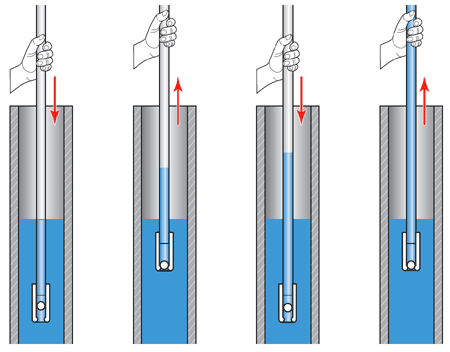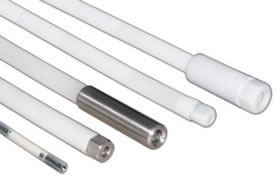Model 404 Inertial Pump
The Inertial Pump is a simple, reliable inertial pump that provides a cost effective sampling option for groundwater monitoring.
The Pump consists of a riser tube fitted with a one-way footvalve. It can be easily operated manually at shallow depths, or by using a surface pumping mechanism. The tubing and footvalves come in a range of sizes suitable for most well diameters and sampling applications. A 1/4" (6 mm) Mini Inertial Pump is available for sampling inside CMT Multilevel Systems.
The Inertial Pump is a simple alternative to using a bailer. Like a bailer, the key part is the check ball which is located in the foot of the pump. As such, the Inertial Pump is often referred to as a 'footvalve'.
Operation
To obtain a sample, hand-thread a footvalve onto the tubing, and then lower to the desired depth in a well or borehole. Repeatedly lower and raise the assembled tubing and footvalve approximately 6" - 12" (15 - 30 cm). A slug of water enters the tubing on the downward stroke and is retained, as the valve closes, on the upward stroke. This enables the water to gradually rise in the tubing and discharge at surface.
It is very easy to operate the pump by hand, but if preferred, surface pumping mechanisms powered manually, or by gasoline or electricity are available.

Inertial Pump Operation



 German
German English
English